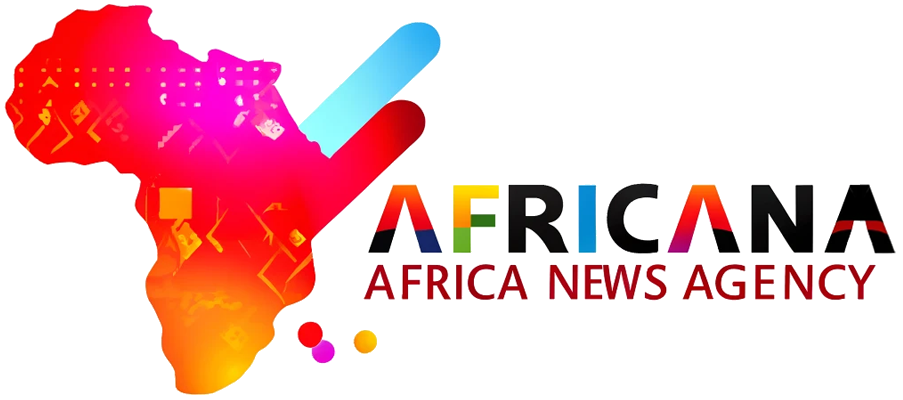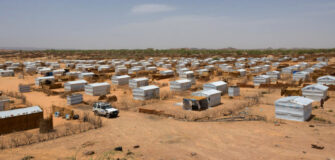Share
Western and Central Africa (AFW) is a vast region with diverse cultures, beliefs, languages, and lifestyles.
Stretching from the most western point of Africa, across the equator, and partly along the Atlantic Ocean till the Republic of Congo in the South, it encompasses 22 countries that spread across semi-arid areas in the Sahel, large coastal areas on the Atlantic Ocean and along the Gulf of Guinea and tropical forest covering many countries from Guinea to the Republic of Congo, through Côte d’Ivoire, Cameroon, and Gabon.
Home to about half a billion people, the sub-region has seen its population multiplied by 4 in the last 50 years. The population is mostly concentrated in the coastal areas, while landlocked countries generally experience lower density. The region has experienced accelerated urbanization, with cities hosting 48% of the population. With 12% of its population being under the age of 15, Western and Central Africa has one of the youngest populations in the world.
Many countries are resource-rich and export commodities such as oil (Gabon, Nigeria, Republic of Congo), cocoa (Côte d’Ivoire, Ghana) and cotton (Benin, Burkina Faso). The agriculture and food sector remains however central in most countries with agriculture providing 42% employment in 2019.
The sub-region is rich in resources and brimming of opportunities. It has experienced high economic growth from the mid-2000’s, powered by high commodity prices across natural resource-rich, before slowing down over the recent period.
Economic outlook
In AFW, economic activity is set to increase from 3.2% in 2023 to 3.7% in 2024 and further accelerate to 4.2% in 2025–26. The subregion’s performance will be held back by the lower-than-average growth in Nigeria. Excluding this country, the AFW subregion is projected to grow by 4.4% in 2024 and 5% in 2025–26.
Within the subregion, economic activity in the West African Economic and Monetary Union (WAEMU) is projected to increase by 5.9% in 2024 and 6.2% in 2025 due to the solid performances of Benin, Côte d’Ivoire, Niger, and Senegal.
Growth in Nigeria is projected at 3.3% in 2024 and 3.6% in 2025–26 as macroeconomic and fiscal reforms gradually start to yield results. A more stable macroeconomic environment, as the reforms’ initial shock dissipates, will lead to sustained but still slow growth of the non-oil economy. The oil sector is expected to stabilize with recovery in production and slightly lower prices. Structural reforms will be needed to foster higher growth. Average inflation will remain elevated at 24.8% in 2024, although it is expected to ease gradually to 15.1% by 2026 on the back of monetary policy tightening and exchange rate stabilization.
In Côte d’Ivoire, economic activity is set to grow at 6.6% in 2024 and to stay firm at 6.5% in 2025–26. A more accommodative monetary policy by the Central Bank of West African States will support private consumption. In line with the development of the offshore Baleine oilfield, rising oil production and exports are expected to boost economic activity. Finally, investments in agriculture, manufacturing, and telecommunications are expected to increase as a result of reforms in the business environment.
Development Challenges
Countries in AFW are suffering from the impacts of multiple overlapping crises over the last years including Russia’s invasion of Ukraine – primarily through higher global commodity prices, especially for wheat and energy – as well as the ongoing consequences of climate change and increasing levels of debt distress.
Increased conflict and violence in the region will continue to weigh on economic activity. Although confined to small economies so far, military coups and the risk of coup contagion significantly impact international investor sentiment and the perception of risk toward the entire region. Tensions in West Africa have escalated with the decisions of Burkina Faso, Mali, and Niger to leave the Economic Community of West African States.
Persistent conflict and organized violence may disrupt production and access to food staples in several countries (Burkina Faso, Mali, Niger among others). Food security problems are amplified by climatic shocks. Disruptions of rainfall patterns, along with the black pod disease, are threatening cocoa production and the livelihoods of farmers in Côte d’Ivoire and Ghana. Moreover, factors like soil degradation, pests, and market fluctuations exacerbate the difficulties faced by agricultural communities.
World Bank support
The World Bank is a long-standing partner of Western and Central Africa. In fiscal 2023, the World Bank approved $12.0 billion in lending to Western and Central Africa for 73 operations, including $564 million in IBRD commitments and $11.4 billion in IDA commitments. About half of these commitments went to countries affected by fragility, conflict, and violence. The Bank also delivered 98 advisory services and analytics products in fiscal 2023.
Regional Integration
The World Bank is expanding its support for regional integration to address the key priorities of the African continent. Priority areas of engagement in West and Central Africa cover regional infrastructure networks, economic diversification, trade and transport facilitation, finance, human capital development, resilience, and fragility. A special focus is also put on addressing fragility in the Lake Chad and Sahel regions.
Partners
Building on a long history of regional trade, the sub-region made impressive progress in regional cooperation. With ECOWAS, it hosts the largest economic and political union in Africa and includes two monetary unions – the West African Economic and Monetary Union (WAEMU) and the Central African Economic and Monetary Community (CEMAC) that cover 14 countries between them.
The World Bank is a dedicated partner for Western and Central African countries, helping them deliver strong development outcomes for their people by focusing on priorities detailed in the World Bank Africa strategy. The strategy also prioritizes regional integration and research to maximize development impact for clients.
Research and Analysis
Knowledge is essential for governments to make better policies and institutions to make aid more effective. Our most recent regional studies can be found here and analytical work by country is published on each country’s website. This paired with strong analytical work by sector can help promote substantive discussions and drive evidence-based policy making around key development issues.
Source: https://www.worldbank.org/


